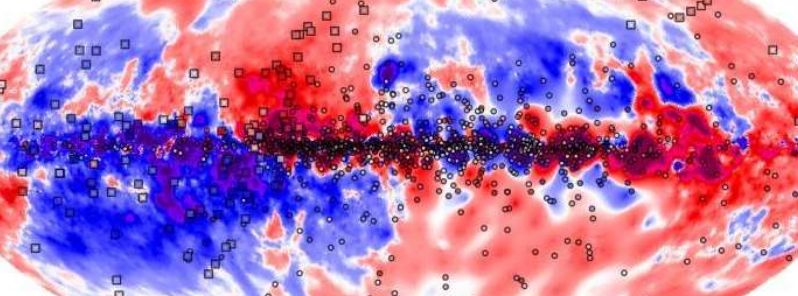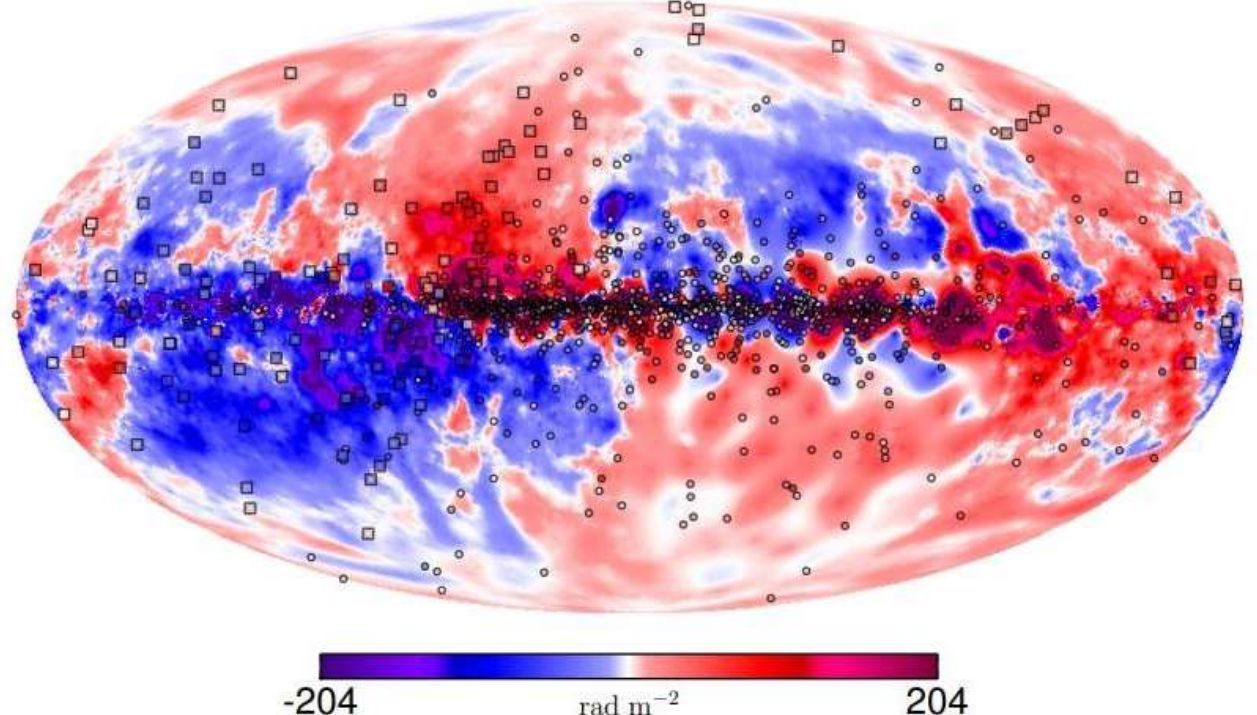Astronomers map Milky Way’s magnetic field

Astronomers from the Commonwealth Scientific and Industrial Research Organisation (CSIRO) and Curtin University, in collaboration with colleagues from Europe, Canada, and South Africa published the most accurate catalog of measurements towards mapping the Milky Way's magnetic field in 3-D.
Our galaxy's magnetic field is thousands of times weaker than that of Earth. However, it is of great importance for tracing the paths of cosmic rays, star formation, and many other astrophysical processes.
People's knowledge of the Milky Way's 3-D structure was limited– until researchers probed its magnetic field, enabling them to map it.
Pulsars were distributed all through the Milky Way, and the intervening object in the galaxy impacted their radio-wave emission.
Using a huge European radio telescope called the Low-Frequency Array (LOFAR), scientists were able to construct the most extensive, low-frequency catalog of magnetic field strengths and directions towards pulsars, to date.
The outcome showed how the galactic magnetic field strength lessens with distance from the plane of the galaxy.
"This is an indication of the great results that we can achieve using the next-generation of radio telescopes," said Dr. Charlotte Sobey, the lead author of the study.
"Since we cannot observe our entire Galaxy from one place on Earth, we are now using the MWA (Murchison Widefield Array) in Western Australia to observe pulsars in the southern sky."
The researchers presented their work at Fresh Science WA 2019 and published it in Monthly Notices of the Royal Astronomical Society journal.

Image credit: freshscience.org
Reference
"Low-frequency Faraday rotation measures towards pulsars using LOFAR: probing the 3D Galactic halo magnetic field" – Sobey, C. et al – Monthly Notices of the Royal Astronomical Society – DOI: https://doi.org/10.1093/mnras/stz214
Abstract
We determined Faraday rotation measures (RMs) towards 137 pulsars in the northern sky, using Low-Frequency Array (LOFAR) observations at 110–190 MHz. This low-frequency RM catalogue, the largest to date, improves the precision of existing RM measurements on average by a factor of 20 – due to the low frequency and wide bandwidth of the data, aided by the RM-synthesis method. We report RMs towards 25 pulsars for the first time. The RMs were corrected for ionospheric Faraday rotation to increase the accuracy of our catalogue to ≈0.1 rad m−2. The ionospheric RM correction is currently the largest contributor to the measurement uncertainty. In addition, we find that the Faraday dispersion functions towards pulsars are extremely Faraday thin – mostly less than 0.001 rad m−2. We use these new precise RM measurements (in combination with existing RMs, dispersion measures, and distance estimates) to estimate the scale height of the Galactic halo magnetic field: 2.0 ± 0.3 kpc for Galactic quadrants I and II above and below the Galactic plane (we also evaluate the scale height for these regions individually). Overall, our initial low-frequency catalogue provides valuable information about the 3D structure of the Galactic magnetic field.
Featured image credit: freshscience.org

Commenting rules and guidelines
We value the thoughts and opinions of our readers and welcome healthy discussions on our website. In order to maintain a respectful and positive community, we ask that all commenters follow these rules.